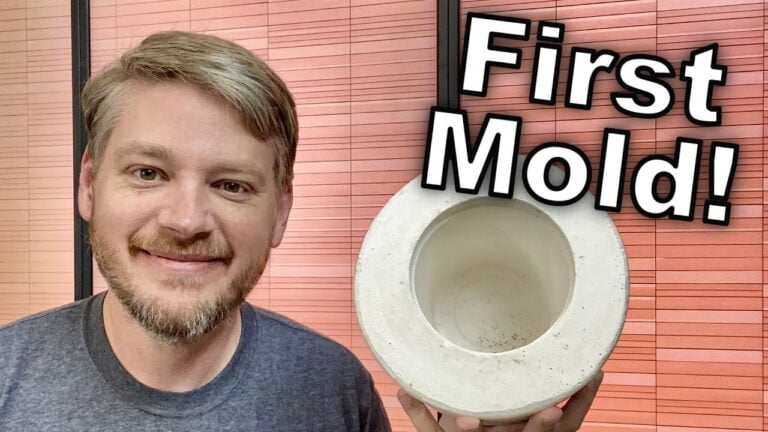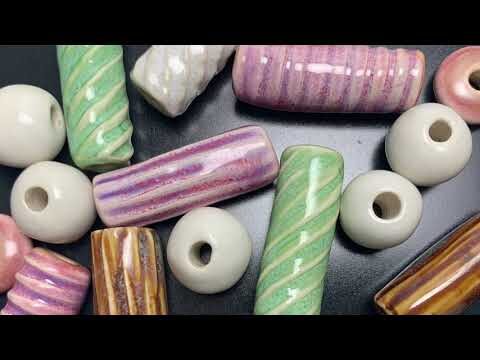Are you looking to create intricate and unique ceramic pieces? Slip casting mold materials may be the key to unlocking your creativity. By using specialized materials like plaster, silicone, and rubber, you can easily replicate intricate designs and shapes with precision and ease. In this article, we will explore the benefits of using slip casting mold materials and how they can elevate your ceramic creations to the next level.
What material is used for slip casting?
Slip casting utilizes a mixture of deflocculated clay slurry, which is a water-reduced form of clay, to create ceramic pieces. This method involves pouring or pumping the slurry into plaster molds, where the absorbent plaster helps to extract water from the mixture. As a result, a layer gradually forms against the surface of the mold over a specific time frame, typically around 20 minutes.
The material used for slip casting is crucial in achieving the desired shape and texture of the final ceramic product. By using deflocculated clay slurry, the consistency allows for easy pouring or pumping into the molds. Additionally, the interaction between the clay slurry and plaster molds plays a vital role in shaping the ceramic piece, as the water content is gradually absorbed, leaving behind a solidified layer that conforms to the mold’s surface.
Overall, slip casting offers a precise and efficient method for creating ceramics, with the material choice of deflocculated clay slurry playing a key role in the process. By understanding how the water-reduced clay interacts with plaster molds, artists and artisans can produce intricate and detailed ceramic pieces with consistent results. The combination of materials and technique in slip casting results in beautiful and functional ceramic pieces that showcase the creativity and skill of the maker.
What type of plaster is best for slip molds?
When it comes to creating slip molds in the pottery studio, USG® No. 1 Pottery Plaster is the go-to choice. This high-quality plaster is renowned for its ability to absorb water effectively, making it perfect for slip-casting molds. With a water-to-plaster ratio of 70 pounds to 100 pounds, Pottery #1 is a reliable option for artists looking to create intricate and detailed pieces.
USG® No. 1 Pottery Plaster stands out as the top choice for pottery enthusiasts due to its exceptional performance in slip mold production. Its superior water absorption properties make it a favorite among artists who require precise and intricate mold designs. With Pottery #1, artists can trust that their slip-casting molds will turn out beautifully, capturing every detail with precision and accuracy.
In the world of pottery, USG® No. 1 Pottery Plaster reigns supreme as the preferred choice for slip mold creation. Its ability to absorb water effectively and set up with just the right consistency makes it a reliable and versatile option for artists of all skill levels. With Pottery #1, artists can confidently create stunning and intricate slip-casting molds that will bring their creative visions to life.
What is in casting slip?
Casting slip is a mixture made up of specific ingredients that are essential for creating ceramic molds. These ingredients include finely ground clay powder, carefully chosen raw materials, water, and deflocculants. The combination of these elements is crucial in maintaining the clay in a suspended state, allowing for precise and intricate casting.
The fine clay powder used in casting slip provides the base material for the mold, while the selected raw materials contribute to the overall texture and quality of the finished product. Water is added to the mixture to help maintain the desired consistency and workability, ensuring that the slip can be poured and molded effectively. Deflocculants play a key role in preventing the clay particles from clumping together, allowing for a smooth and even distribution throughout the mold.
By understanding the composition of casting slip and the function of each ingredient, ceramic artists can create molds that are both structurally sound and visually appealing. The careful balance of clay powder, raw materials, water, and deflocculants is essential in achieving the desired results in the casting process, resulting in beautifully crafted ceramic pieces that showcase the skill and creativity of the artist.
Maximizing Efficiency: The Key to Successful Slip Casting
Slip casting is a versatile and efficient method of creating ceramics, but maximizing efficiency is crucial for achieving successful results. By carefully preparing the slip mixture and molds, ensuring proper drying and firing times, and consistently monitoring the process, you can streamline production and minimize waste. Investing time and effort into optimizing your slip casting techniques will not only improve the quality of your finished pieces but also increase your overall productivity.
To truly excel in slip casting, it is essential to prioritize efficiency at every stage of the process. This includes selecting high-quality materials, maintaining clean and organized workspaces, and implementing streamlined workflows. By constantly seeking ways to improve and refine your techniques, you can enhance the precision and consistency of your casting results while reducing the risk of errors or defects. Ultimately, by focusing on maximizing efficiency in your slip casting practice, you can unlock its full potential and achieve greater success in your ceramic creations.
Innovative Mold Materials for Streamlined Production
Discover the future of mold materials with our innovative solutions designed to streamline your production process. Our cutting-edge materials are engineered to enhance efficiency and precision, allowing you to achieve higher productivity with minimal downtime. Say goodbye to traditional molds and embrace the next generation of materials that revolutionize the way you manufacture your products.
Experience a new level of performance with our advanced mold materials that are specifically tailored to meet the demands of modern production processes. From increased durability to superior heat resistance, our materials are built to withstand the rigors of high-volume manufacturing. With our innovative solutions, you can optimize your workflow and achieve consistent, high-quality results every time.
Revolutionize your production line with our state-of-the-art mold materials that offer unmatched durability and reliability. Our materials are carefully curated to deliver exceptional performance, ensuring that your molds last longer and produce flawless products consistently. Embrace the future of manufacturing with our innovative solutions that redefine efficiency and precision in mold production.
The Art of Efficiency: Choosing the Right Slip Casting Mold
When it comes to slip casting, choosing the right mold is crucial for achieving efficiency in your production process. The art of efficiency lies in selecting a mold that not only meets your design requirements but also streamlines the casting process. By carefully considering factors such as mold material, size, and design intricacies, you can optimize your workflow and minimize wastage. Investing in high-quality, durable molds can also contribute to long-term efficiency by reducing the need for frequent replacements and maintenance.
In the pursuit of efficiency, it is essential to prioritize functionality and practicality when selecting slip casting molds. The right mold can make a significant difference in the speed and precision of your casting process, ultimately saving time and resources. Additionally, embracing innovative mold designs and technologies can further enhance efficiency by allowing for intricate and complex shapes to be produced with ease. By understanding the impact of mold selection on efficiency, you can elevate your slip casting process and achieve consistent, high-quality results.
Efficient Production: The Role of Mold Materials
Efficient production relies heavily on the choice of mold materials. By selecting the right materials, manufacturers can ensure a smooth and precise manufacturing process, leading to high-quality products and reduced waste. Different mold materials offer various advantages, such as durability, heat resistance, and flexibility, allowing for the production of a wide range of components and products.
The role of mold materials in efficient production cannot be overstated. With the right materials, manufacturers can streamline their production processes, increase productivity, and ultimately save costs. From plastic injection molding to die casting, the choice of mold materials plays a crucial role in determining the success of a manufacturing operation. By investing in high-quality materials and understanding their properties, manufacturers can optimize their production processes and stay ahead in today’s competitive market.
Overall, choosing the right materials for slip casting molds is crucial in ensuring the success of your ceramic production. By considering factors such as durability, porosity, and thermal shock resistance, you can create molds that will consistently produce high-quality ceramics. Whether you opt for plaster, silicone, or resin, understanding the unique properties of each material will help you achieve the desired results in your casting process. With careful selection and proper maintenance, your slip casting molds will serve as reliable tools for bringing your creative visions to life.



